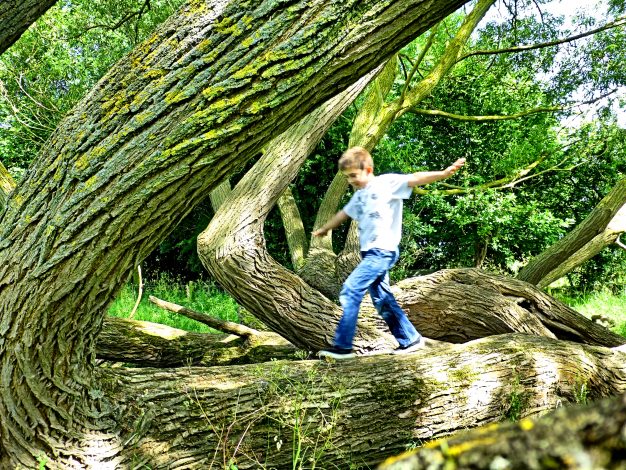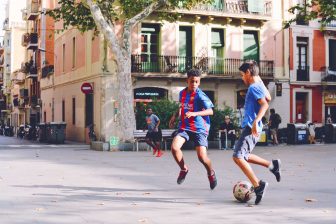
Child friendly cities benefit us all (part 3)
In this third part of his article about the urban renaissance needed for cities to properly respond to their growing child populations, Sam Williams highlights the importance of accessible green and playable places, and the role of local activism in creating child friendly cities from the ground up.
(Read the first part of this article here and the second here).
Contact with nature is also very important for health and wellbeing, but the debate around children often focuses on the idea that a rural childhood is “better” than the urban alternative. This is neither based in reality nor of any use for providing meaningful natural experiences for the one billion children now living in cities. In fact, an RSPB study found there are higher levels of contact with nature among urban children than their rural counterparts.
 Green space caters for a wide range of physical activities, and cities with lots of it have healthier citizens too. For instance, gardening and food-growing are great opportunities for young and old to do together and learn from each other. Street trees, parks and urban forests help provide nature, but they also build up a city’s resilience to heat and flooding. By thinking beyond the standard plastic playgrounds in this way we can start to imagine exciting spaces which not only provide play, community and ecology, but also make a city safer and stronger in the face of great uncertainty about the climate.
Green space caters for a wide range of physical activities, and cities with lots of it have healthier citizens too. For instance, gardening and food-growing are great opportunities for young and old to do together and learn from each other. Street trees, parks and urban forests help provide nature, but they also build up a city’s resilience to heat and flooding. By thinking beyond the standard plastic playgrounds in this way we can start to imagine exciting spaces which not only provide play, community and ecology, but also make a city safer and stronger in the face of great uncertainty about the climate.
Pedestrian-friendly streets
Around the world and across the UK there are many great examples of these ideas being put into practice and delivering what they promised. Vauban in Freiburg, Germany is regarded as one of the most child-friendly places in the world. Its safe, pedestrian-friendly streets, multifunctional green space, and eco-principals all add up to an award-winning healthy place that works for everyone.
Rotterdam implemented a major child-friendly initiative to turn around the problems the city was having with people moving away to have families, which has been highly successful. Across the UK there are hundreds of people doing great work. Charities such as Playing Out and London Play are doing fantastic things such as helping people start up their own play streets. Councils removing No Ball signs need congratulating. Playworkers up and down the country are providing excellent opportunities and need our support.
Powerful imagination has always been at the heart of changing streets and making them places for play and community.
– Hugh Barton, City of Well-being
Big change mostly comes about through lots of small coordinated actions. We have to take a holistic approach and join up efforts across a wide range of disciplines and industries to create the city we want to see. It is endlessly complex, but we need to be bold and positive about the vision we have.
Possibly the biggest challenge is persuading people that these ideas are worth spending money on, and finances are the stumbling block for a lot of projects. Without a clear understanding of how a city works it is very hard to make any progress. Working at Arup, we are fortunate to have integrated teams of landscape architects, urban designers, planners, economists, transport and more, all working closely together on projects around the world.
Like children, cities are always changing. There is no one-size-fits-all solution for their problems, and they both need understanding, compassion, and people who care about them.
Samuel Williams
Arup
Inset photo: Jane Bain
(this article was first blogged on Play England)




